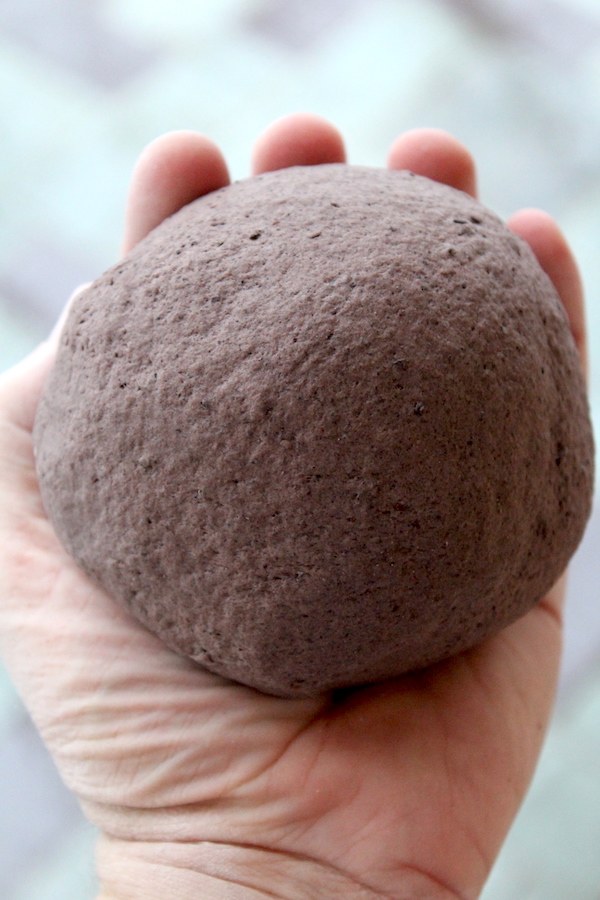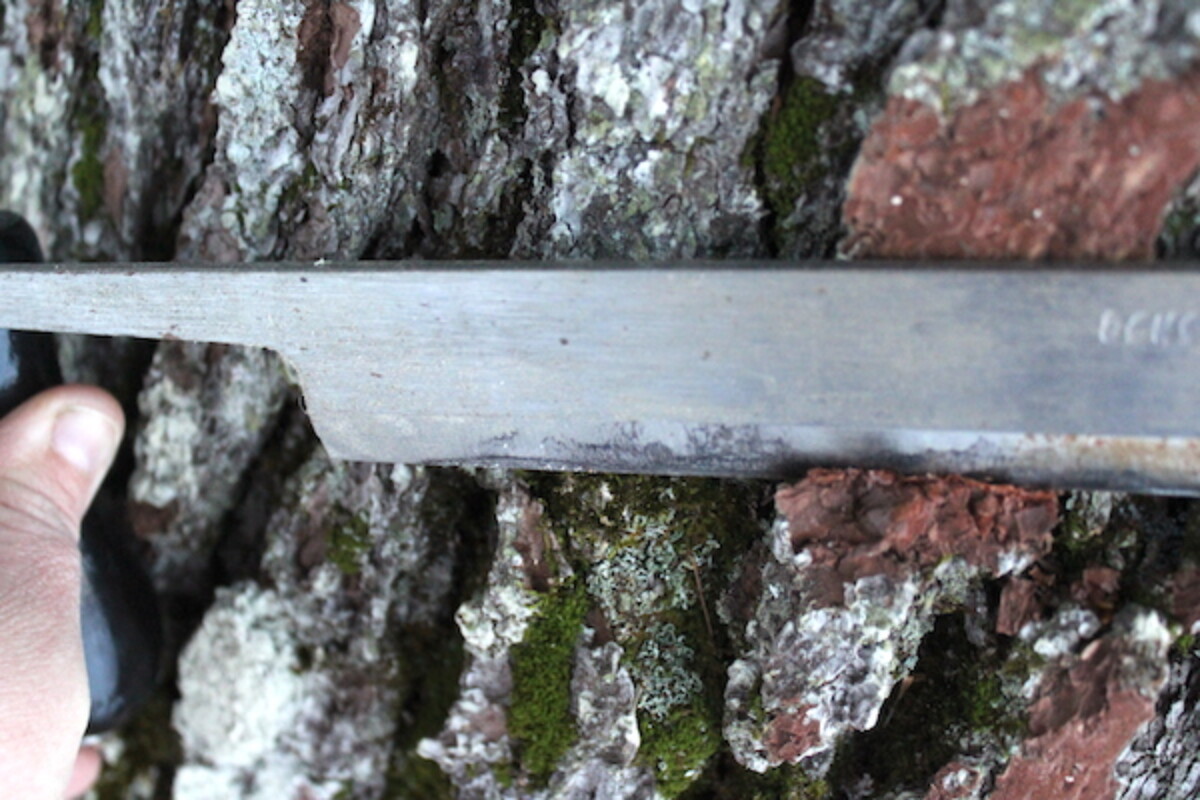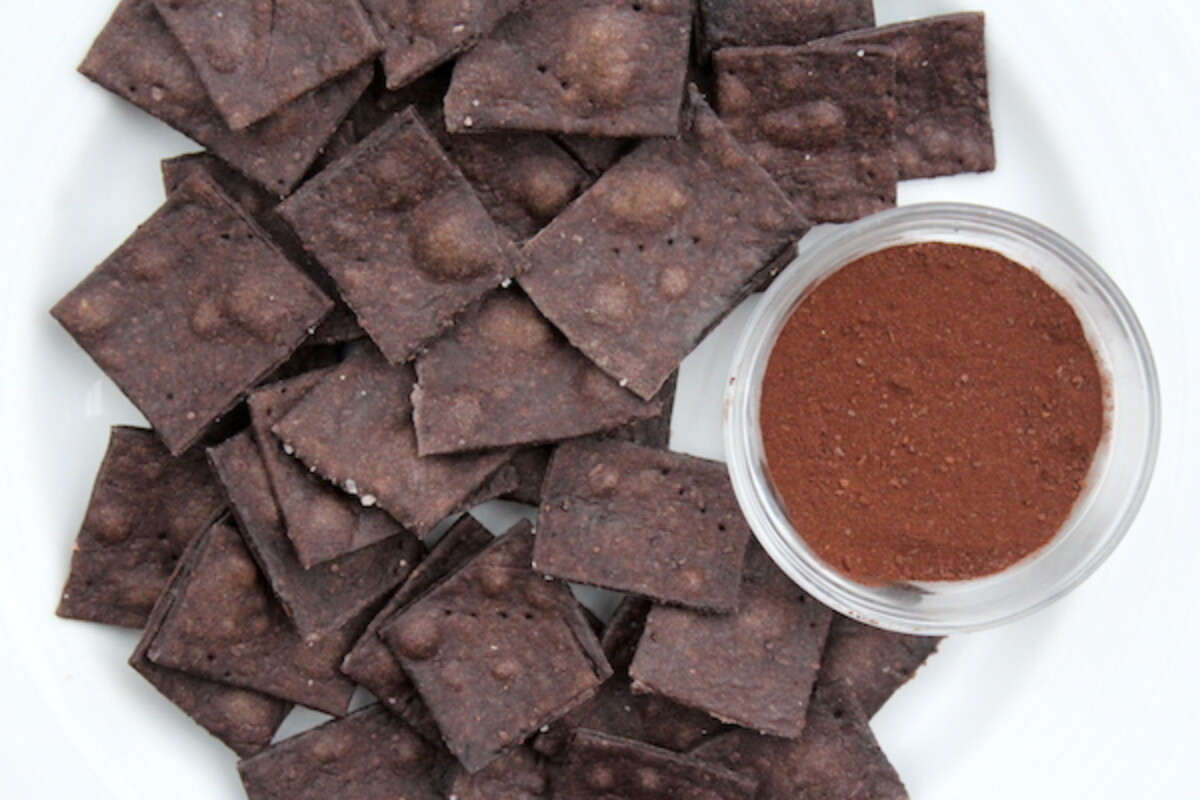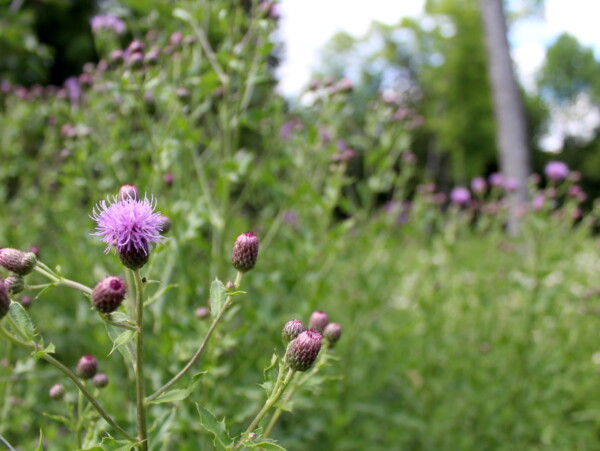Affiliate disclosure: This post may contain affiliate links. Please see our Privacy Policy.
When you hear “eating bark” your mind probably jumps to a pretty dire survival situation, but historically that’s not the case.
Bark, specifically pine bark and birch bark, have been used for centuries to flavor food and boost nutrition, even in times of plenty.

Bark breads are a staple of Nordic indigenous cuisine. The Sami of northern Sweden harvested pine bark and mixed it with reindeer milk in their traditional breads.
Since the richest Sami had the most reindeer, they’re also the ones that harvested the most pine bark. It wasn’t out of desperation, but out of a quest for flavor.
In the case of birch bark, the historical evidence is clear that the papery outer bark was used to make food storage vessels, while the nutritious inner bark was ground into birch bark flour. In the case of pine bark, the records are a bit less clear.
There are some sources that say only the inner bark was used, and others that claim only the outer bark was used. Since I’ve been able to find recipes using both, I’ll share them all with you.

Pine Bark Flour Using Outer Bark
The outer bark of a tree is mostly there to protect the tree from the elements and doesn’t contain much in the way of calories. Calories aren’t the only reason to eat something, and pine outer bark seems to have other benefits. Pine outer bark may contain compounds that help keep food from spoiling or important nutrients that were scarce in a northern climate.
According to Nordic Food Lab, though pine outer bark is not calorie-rich, it does “contain condensed tannins called procyanidins that are being researched for potential health benefits. Aromatic hydrocarbons such as terpenes and phenols which give pine its distinctive warm, woody scent also deliver antimicrobial properties, perhaps useful for blending with other flours to preserve their shelf life.”

These days, nutritional supplements are made from pine bark, and you can buy bags of powdered pine bark online which claim that “Pine Bark is used worldwide for its antioxidants and anti-inflammatory properties. When used regularly, pine bark may support healthier cardiovascular and circulatory function.”
The outer bark was harvested from a section of the tree to create a “window pane” of exposed cambium. Over time, the bark slowly healed over the wound, and since the inner cambium was not harvested the tree continued to grow.
Such trees could be harvested multiple times over the course of their life. There’s evidence of window panning on 700+-year-old pine trees in northern Sweden.

Obviously, if you’re going to harvest the bark of a tree, know that you are damaging the tree in a way that will impact it for hundreds of years. This particular pine tree has a partially dead top, and it’s very near our wind turbine. It’s going to be cut in the spring, so it’s a good candidate for bark harvest.
I started out using a draw knife, but it’s actually pretty difficult to use one just on the surface without really digging into the cambium. Since I only needed a small amount of pine bark flour, I was able to just use my hand to flake off chunks of shaggy exterior bark from a large pine tree growing on our land. No need to window pane a tree and cause it damage in any case.

Initially, I tried to grind the pine bark flour in a food processor, but it was in vain. The exterior bark is quite hard, but not brittle enough to fly apart.
After several minutes the motor was heating up and had almost no pine bark flour to show for it. The bark, even exterior bark, needs to be dried out thoroughly before grinding.
I put the bark chips in the oven at 350 for about 45 minutes. The house smelled nice and toasty, like the warm scents of the high desert pine forests of my youth.
Once the bark was toasted it ground much more easily. It would be possible to dry the bark out over a low fire in a similar way, which would make it much easier to grind by hand. When the pine bark was dried, I put it back into the food processor for grinding.

This recipe for pine bark bread using the outer bark comes from Laila Spik, a Sami elder and indigenous ambassador from Northern Sweden. It was printed in A Boreal Herbal, which I found to be a great resource for foragers in Northern climates like myself.
While it’s called “bread” it’s actually crisp crackers that are completely unleavened. The dough is formed using a mixture of pine outer bark flour and whole wheat flour, and then it’s rolled thin on a baking sheet. The pine bark crakers cook for about 4 minutes in a 500-degree F oven.


Pine Bark Bread (with outer bark)
Ingredients
- 7/8 cup Pine Bark Flour, 200ml
- 3 3/4 cup whole wheat flour, 900ml
- 1 tsp salt, 5ml
- 1 3/4 cup cold water, 400 ml
Instructions
- Preheat oven to as hot as it goes, around 500 degrees for mine.
- Mix all ingredients to form a dough. Adjust with more water or flour if it is either too sticky or dry.
- Roll the bark flour cracker dough into very thin sheets and prick it every inch or so with a fork. Cut it into bite-sized pieces and place them on an oiled baking sheet.
- Bake for about 3 minutes, turning the sheets halfway through. When the crackers come out of the oven they'll have a soft texture, but they'll be crisp once they cool.
Nutrition
Nutrition information is automatically calculated, so should only be used as an approximation.
Maybe it’s a cultural thing. Maybe I’m just horrible at making crackers. I baked up half the dough into a tray of crackers, but I saved the second half of the dough for experimentation.

At this point, I had a mass of unleavened dough, but it’s not hard to incorporate a bit of yeast after the fact. One of my favorite bread books makes whole grain bread using a slow fermentation technique.
The method starts out with two different starters, one with yeast and one without. They’re then kneaded separately before being chopped into tiny pieces and then kneaded together. That allows you to seamlessly add yeast to a mass of unleavened dough.
I used this technique to turn the remaining pine bark bread dough into a yeasted loaf. After about 35 minutes in the oven, my tiny bark bread loaf was done. My 3-year-old daughter, the bread fiend that she is, was eager to try it and she stole the first piece.
It met with her approval, and she handed it to me for a taste. The verdict…It’s shockingly good. It tastes quite a bit like any dark brown bread, but with the same warm notes of pine forest that I smelled when the bark was originally toasting.

The inner bark of pine trees is much milder, and actually contains calories (instead of just nutrients). I now have high hopes for making a really tasty loaf with pine cambium flour…
Pine Bark Flour Using Inner Bark
Unlike the outer bark of pine trees, the inner bark of pine trees contains a surprising amount of calories. According to The Nordic Cookbook, Pine bark flour made from the phloem (inner bark) “contains about 80 calories per 100 grams, compared with wheat flour, which contains well over 800 calories per 100g.”
(That’s actually a printing error, and wheat flour contains around 360 calories per 100 grams. So assuming the 80 calories isn’t in error, pine bark flour has around 20% as many calories as wheat flour by weight.)
Beyond just the caloric content, studies show that pine bark flour may have been an important source of vitamin C for the Sami people. Similarly, Nordic Food lab notes that “The phloem of the pine is rich in ascorbic acid (Vitamin C), which during the 1800s helped the Sami of the interior of Norway and Sweden avoid the scurvy that was at the time devastating the coastal populations of non-Sami farmers.”
Again, the flour from the inner bark, similar to the flour from the outer bark, was not just a famine food. A type of rye bread known as pettuleipä is still eaten in Finland in Modern times.
The Nordic Cookbook notes that pine bark flour is available at some health food stores in Scandinavia, and “Especially in Finland, breads baked with pine bark had a strong tradition and historically have been eaten on a regular basis, not just when grains were not plentiful enough to last through the winter.”
The author provides a recipe for traditional pettuleipä which is a full page of text (with small font!) and requires 4 full days of slow fermentation. Starting with a very wet batter and yeast starter, increasing amounts of rye and pine bark flour are added to the dough each day.
The author notes how the bread should look at each stage of the slow fermentation, and at the end of day 3, the bread should be “frothing” and asks you to taste it to make sure that it’s tart from the activity of abundant lactobacilli (lactic acid bacteria as in yogurt).
I had hoped to make this bread, but when I went out to harvest pine phloem the temps were too cold. Traditionally pine bark is harvested in late spring or early summer, with the peak harvest in June. Likely that has to do with the fact that there will be more sugars in the phloem when the tree is actively growing, but it’s also a matter of practicality.
Trying to harvest pine bark in freezing temperatures is just impractical, and the phloem just flaked away in shards rather than coming off in clean sheets. So much for pine bark being a winter survival food.
I should note that harvesting the inner bark from a tree can kill it, and this should only be done with trees that are slated to be cut down anyway (as mine was). Alternatively, you can harvest the inner bark from pine branches that you’ve cut off for that purpose.
Other Ways to Eat Bark
Beyond grinding it into flour, the inner cambium can be eaten as it is.
The author of A Boreal Herbal notes, “The inner bark (cambium layer) has long been used as a survival food and can also be eaten in raw slices. I like to use the soft, moist, white inner bark for making pesto. Most pesto recipes call for pine nuts. But one day, when I was making pesto I didn’t have any around. Remembering the flavor of the pine’s inner bark, I thought, why not? I’ll try it. It was wonderful— I haven’t used pine nuts since. The inner bark contains lots of starch and many sugars and can be boiled or ground and then added to soups and stews.”
Though not quite pine, Tamarack is a related conifer. In Rogers Herbal Manual, Herbalist Robert Rogers gives a recipe for tamarack bread: “Scrape off the softwood and inner bark of tamarack, mix with water, and ferment into a dough to be made with rye meal. Bury under the snow for a day. As fermentation begins, the dough can be cooked as a camp bread or as dumplings, the sweet wood pulp acts as a sugar for the yeast in the rye.”
So there you have it, yet another way to eat a pine tree. Pine nuts are tasty, their needles are edible, the sap is medicinal and now you know how to eat pine bark.















Thank you endlessly! 💫